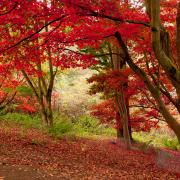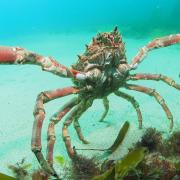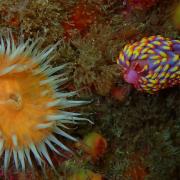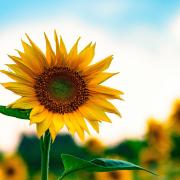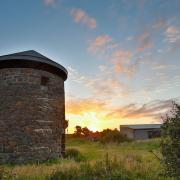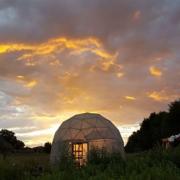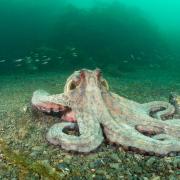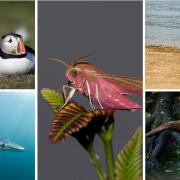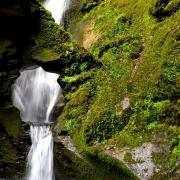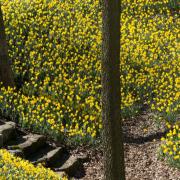The RSPB's two wetland nature reserves at Hayle and Marazion annually attract a fascinating variety of birds and animals. If you have an interest in wildlife or you are a keen birdwatcher then Cornwall is a fascinating place to be.
Way out West
The RSPB’s two wetland nature reserves at Hayle and Marazion annually attract a fascinating variety of birds and animals
If you have an interest in wildlife or you are a keen birdwatcher then Cornwall is a fascinating place to be. The RSPB has two nature reserves at Hayle and Marazion, which offer visitors year-round interest in this most westerly outpost of the RSPB’s network of nature reserves.
If you have an interest in wildlife or you are a keen birdwatcher then Cornwall is a fascinating place to be. The RSPB has two nature reserves at Hayle and Marazion, which offer visitors year-round interest in this most westerly outpost of the RSPB’s network of nature reserves.
Hayle Estuary
Situated in the town of Hayle, the estuary is surrounded by a network of roads, railways, factories, a busy harbour and the houses of Hayle and Lelant, where a wealth of wildlife exists. Hayle is justly proud of its ‘jewel in the crown’, the most south-westerly estuary in Great Britain, with a mild climate that ensures it remains frost-free all year round. When cold weather elsewhere forces birds to warmer shores, Hayle acts as a refuge for a wide range of birds – up to 18,000 have been counted at such times, crammed onto its mud and sandflats.
Acquired by the RSPB in 1992, the estuary is one of the Society’s most important reserves for migrating and wintering birds; it is a first and last staging post for wading birds and ducks, geese and swans that use the area to rest and feed during their travels. The areas of Lelant Water, Carnsew Pool and Copperhouse Creek attract birds from all over the world – and, of course, the people who come to see them.
The over-wintering wigeons, teals and waders start to return to their breeding grounds in March, although occasionally a few stragglers hang on until April. This is the time to see migrant waders moving through the reserve, including oystercatchers, ringed plovers, sanderlings, dunlins, black-tailed and bar-tailed godwits, whimbrels, curlews, greenshanks and redshanks. Black-headed, Mediterranean, lesser black-backed, herring and great black-backed gulls are still present until late April, but by May only the local breeding herring gulls remain. It is worth looking at Porth Kidney Sands nearby for migrant terns roosting on the beach.
The start of the summer is always a quiet time on the reserve since, as on all British estuaries, our wildfowl and waders are away breeding in the Arctic. In recent years, a pair of oystercatchers has taken up residence and bred on one of the islands at Ryan’s Field. Towards the end of June, waders and terns start moving south again and often stop off on the estuary or in the muddy corner of Carnsew Pool. Ospreys have been recent regular visitors to the reserve later on in the summer, but you would have to be very lucky to see one.
Autumn sees the main wader passage through the reserve. Vagrants often turn up here seeking refuge following gales around the coast. Oystercatchers, ringed, golden and grey plovers, lapwings, knots, sanderlings, little stints, curlew sandpipers, dunlins, ruffs, snipe, black-tailed and bar-tailed godwits, whimbrels, curlews, common sandpipers, greenshanks, redshanks and turnstones are regular visitors at this time of the year.
Winter is the season when there are the most birds on the estuary. Enjoy the spectacle of the thousand or so teals and wigeons feeding on the algae-covered mudflats and flying back to the river. Waders include oystercatchers, ringed, grey and golden plovers (coming down off the surrounding farmland to roost and bathe), lapwings, sanderlings, dunlins, black-tailed and bar-tailed godwits, curlews, greenshanks and redshanks. The roosting gulls will include the odd glaucous gull and Iceland gull among the regular great black-backed, lesser black-backed, herring, common, Mediterranean and black-headed gulls. Hayle is one of the top British estuaries for the vagrant ring-billed gull from North America, although they are not seen every winter.
Marazion Marsh
The RSPB’s reserve at Marazion Marsh overlooks the beautiful St Michael’s Mount and boasts Cornwall’s largest reedbed. More than 250 bird, 500 plant, 500 insect and 18 mammal species have been recorded here.
Spring is always an interesting season, when the last of the over-wintering birds overlap with the first of the spring arrivals. Look out for late bitterns around the pools and early sand martins hawking for flies over the reedbeds. Grey herons breed on the marsh; the birds here are unusual in that they nest in the reeds rather than in trees. Warblers start arriving to join the resident Cetti’s warblers and the over-wintering chiffchaffs; look out for willow, sedge and reed warblers and whitethroats on the reserve.
Summer is the season of luxuriant growth, yellow flag making a fine show against the green of this year’s phragmites reeds. Damselflies and dragonflies are abundant over the marsh. Look out for young warblers in the marsh and willows as well as the young of the resident birds such as stonechats and linnets. By August, many species will have started their autumn migration; this is the last chance you will have to see any swifts. Martins and swallows, however, start to gather in some numbers on a quiet warm evening and descend into the reedbeds to roost.
Autumn brings migrants from the north; look for wheatears and meadow pipits in the ‘Sanctuary Area’. Look out for little egrets in the pools and water rails (or even the very rare spotted crake) in the muddier areas at the base of the reedstems. Overhead, late-departing swallows and martins are hawking flies and feeding up in readiness for their flight south over the Channel. This is an exciting time of year in west Cornwall – be prepared to expect the unexpected! By October, the first starlings start to come to roost in the reedbed, a precursor to the much larger gatherings later in the year.
Winter is the time to look for bittern along the reed edges, but the most common sightings of this bird are when they fly between fishing sites. Look out for the wintering chiffchaffs, of which there can often be more than 20 birds on the reserve – the greyer individuals are from continental Europe. Also at the base of the reeds, look for water rails, moorhens and coots.
For further information please contact either the RSPB’s Hayle office or Marazion Marsh office on 01736 711682.







